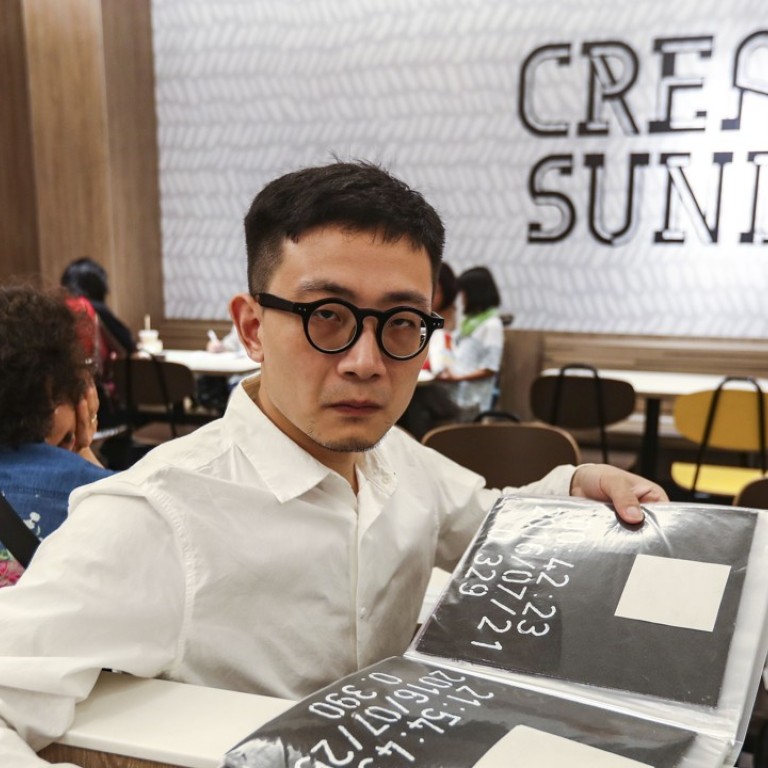
Artist stays overnight at three Hong Kong McDonald’s outlets for more than a year, learns of community and ‘being safe’
Mainland native Ma Yujiang’s experiences as a new resident of the city give rise to art exhibition of gathered receipts and nighttime photos
For more than a year, artist Ma Yujiang, 30, spent his nights in 24-hour McDonald’s outlets in Hong Kong. On average he saw about 15 regular McSleepers frequenting each of the three branches he visited. And he fondly recalls preferring to spend the night with strangers rather than going back to his lonely home.
“It’s weird, but sleepers at each McDonald’s have formed their own communities with certain rules,” the mainland native says.
Such rules include regular sleepers occupying sofas in the inner areas of a branch while newcomers take up spots closer to the front door; women taking seats in the centre area with brighter lighting; and most importantly, no talking to other sleepers.
“There are regulars who see one another every day, but no one ever chats,” Ma explains. “Most people just seem tired. Their eyes are numb and they seldom look up when someone enters. You can only hear the hum of air conditioners and the background music playing throughout the night.”
Ma attributes the silence among fellow sleepers to the group’s “extreme sensitiveness” and simple hope to be left alone.
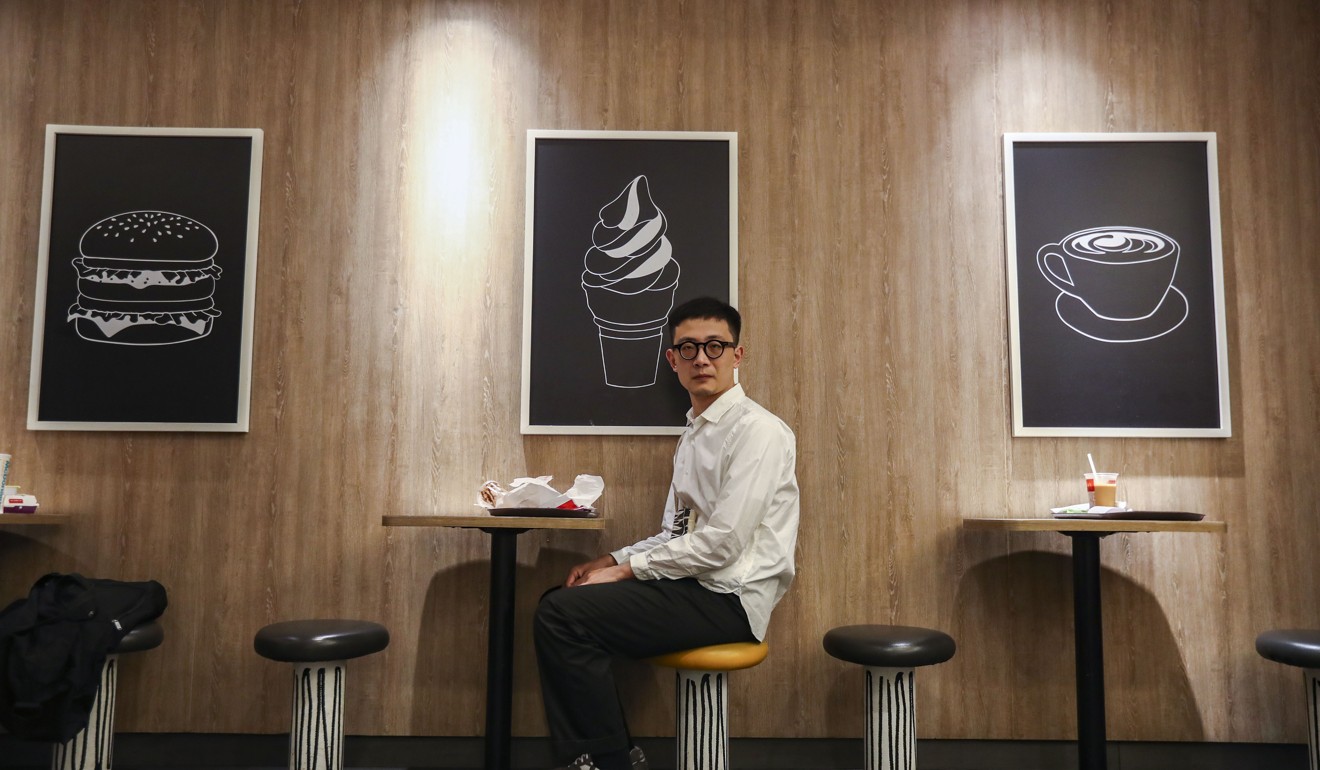
“By avoiding talking to others about what they’re going through, they try to retain some self-respect,” he adds. “They just want a place to hide. The indifference among them creates a sense of being safe.”
They just want a place to hide. The indifference among them creates a sense of being safe
The study by Junior Chamber International, an NGO, in June found 334 people had slept nightly in a McDonald’s branch over at least the past three months, compared with merely 57 as reported in a similar study in 2013.
Hong Kong, a city with the world’s least affordable housing market and soaring rental prices, has 110 McDonald’s branches that operate 24 hours.
Ma describes feeling “a sense of belonging” with the McSleepers “because we’re in the same group – the marginalised in this society”.
Originally from Shandong province in northern China, he moved four years ago to Hong Kong without a stable job, finding himself overwhelmed by the city’s gleaming skyscrapers and fast-paced lifestyle. He used to live alone but later moved to a 400 sq ft flat with his family.
The McDonald’s branch he visited frequently is just a 10-minute walk from home.
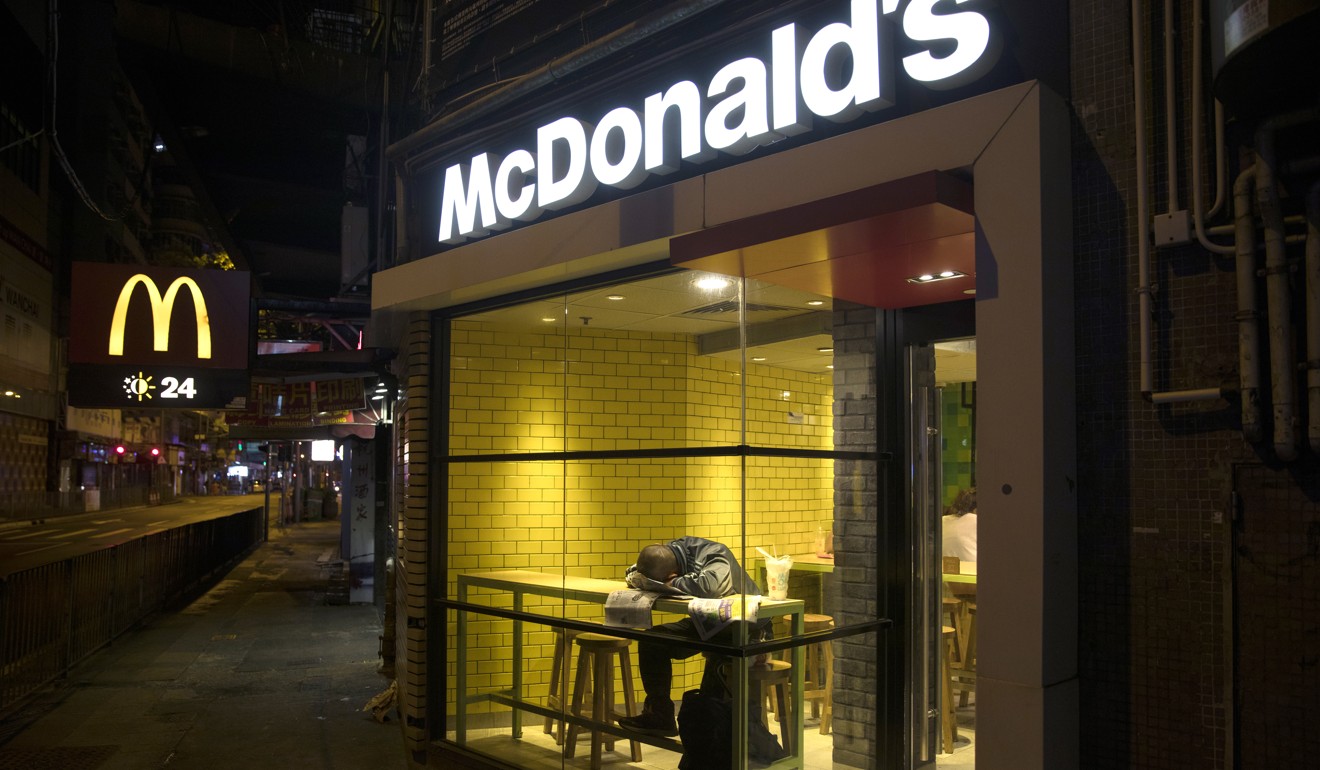
Ma recalls his first encounter with a group of McSleepers in 2015 as “healing” after being immersed in loneliness and depression for almost a year.
He spotted an average of 15 McSleepers at each branch every night, noticing that about half were long-term regulars. His quiet “neighbours” usually showed up between 9 and 10pm.
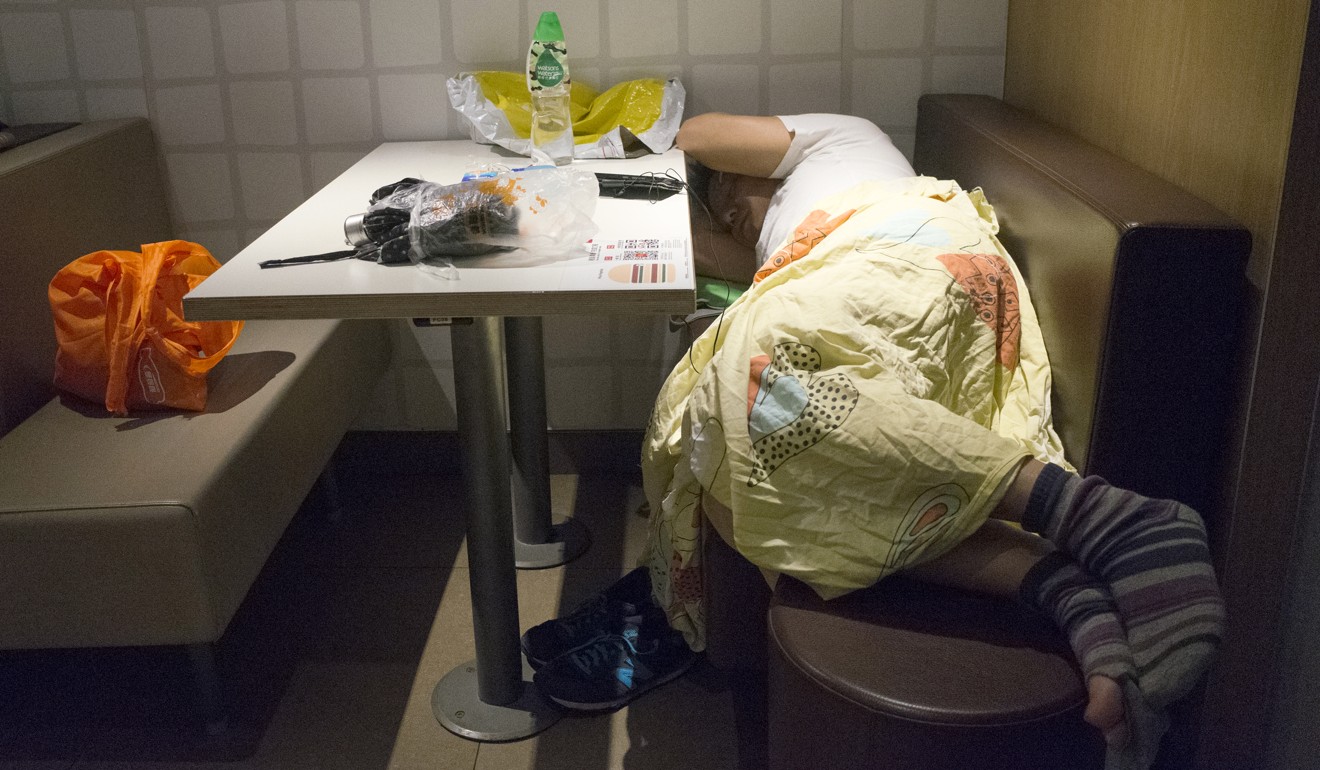
They could only fall asleep at ease after midnight, when the restaurant’s night shift staff would come and occasionally check their receipts. Everyone would leave by 4am, half an hour before the morning shift staff arrived.
After spending most nights in three McDonald’s in Wan Chai, Ma decided to collect sales slips from his fellow sleepers. He sought to understand and record the encounters with his silent “neighbours” who gave him company in a city that felt alien to him.
Over the course of a year, Ma gathered over 2000 vouchers belonging to McRefugees. Last month he exhibited 414 of the paper slips at a gallery space in Wan Chai. He also exhibited a few paragraphs from his diary about sleepers he met, alongside two nighttime photos taken in the McDonald’s branches.
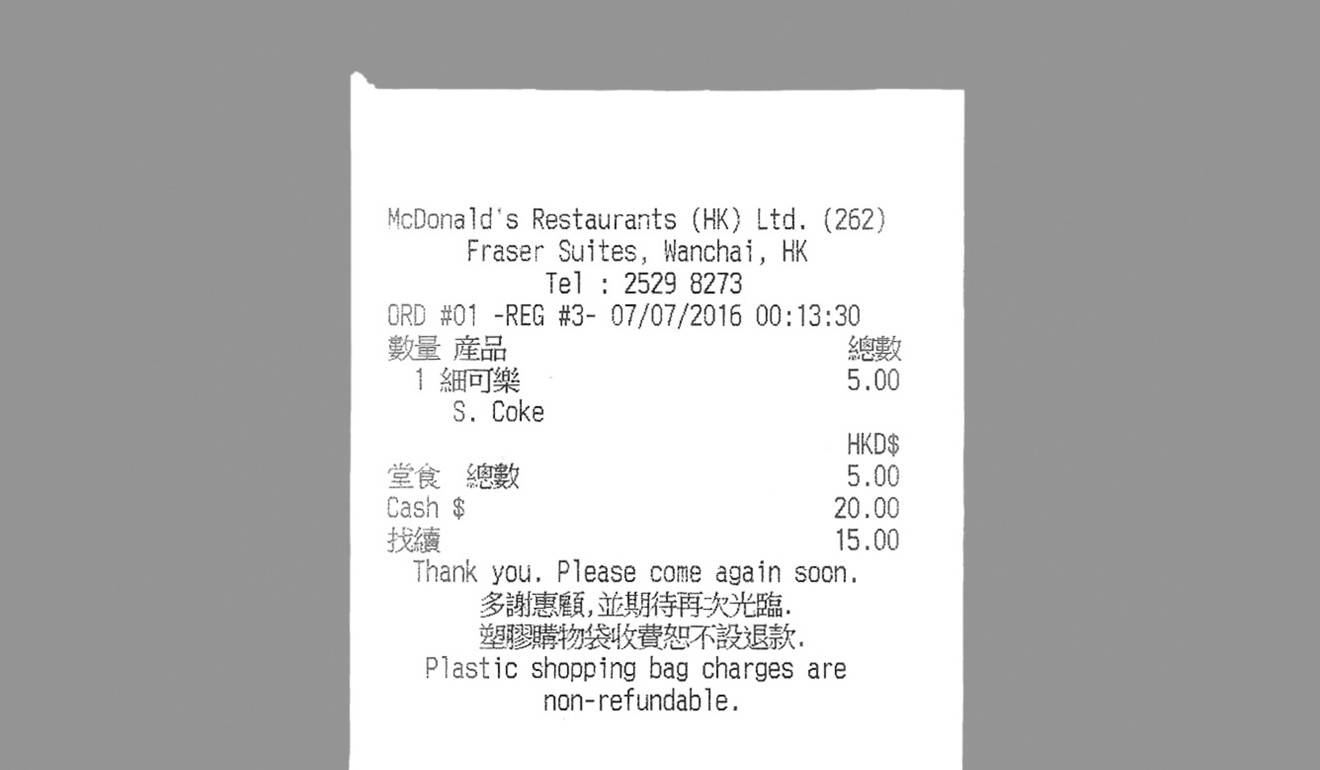
Ma titled his exhibition “How Heavy is the Night” to highlight the irony of how light the receipts weigh. In fact, all the slips he gathered weigh a total of 0.3 to 0.4g, because most sleepers only order one item, typically something priced under HK$10.
“When you see how light these slips are, you understand how light the lives of their owners are and how heavy the social reality is behind them,” he explains.
During the project, something unexpected happened: Ma found himself engaged in a dispute for taking away someone’s receipt.
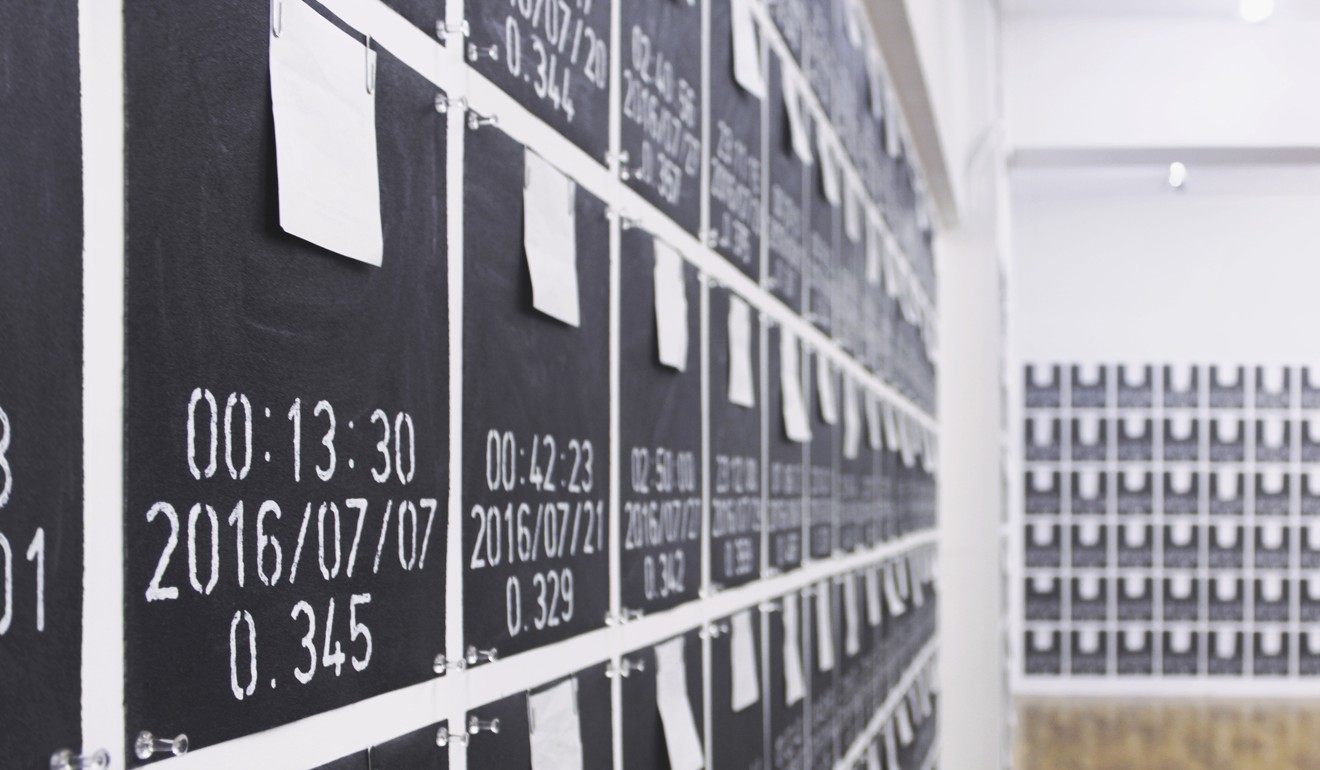
It was almost midnight on a weekday when fewer than 10 people were still lingering at the 24-hour branch. Among them sat three young men wearing headscarves and appearing to be of Middle Eastern descent. A small piece of paper was carefully placed on their table.
Trying to act casually, Ma walked past them and attempted to snatch the receipt without asking. Immediately the three leapt from their seats and started yelling at Ma in English, with one even shaking his fist in the air.
“I couldn’t understand them, but I think one of them was drunk,” Ma recalls. “Luckily nothing physical happened because I backed off. I didn’t realise how much they would care about that one piece of paper.”
Priced out and living above a rubbish dump: where do the city’s rough sleepers go?
“For these sleepers at McDonald’s, a receipt is the entrance ticket to a quiet, safe, comforting place,” he adds.
By holding the exhibition, Ma hopes to present the lives of sleepers in a manner that is “rational and objective”.
“As an artist, I don’t aim to change the world, but rather change how authorities and the public see the world.”
Street sleepers plead for more time at footbridge as clearance looms
For the entire year of his visits to the three McDonald’s outlets, not a single sleeper questioned why Ma was gathering the receipts. The artist had learned to collect them at about 12.30am after night shift staffers checked the “tickets”.
It wished him a prosperous new year and good luck.
“He just smiled at me,” Ma says. “And I smiled back.”

